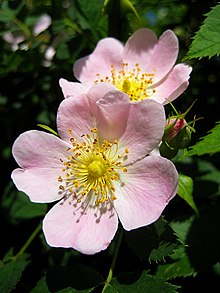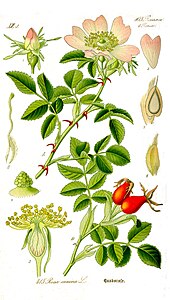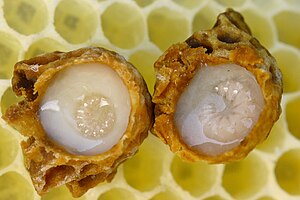
Rosiflex
contains a unique natural supplement that is good for joint health. If
you are looking forward to a natural way to minimize your joint pain and
stiffness, then Rosiflex is the ideal choice for you. Rosiflex is for
anyone who wants healthy, flexible and mobile joints for a better
quality of life. The unique natural ingredient in Rosiflex has been
clinically proven to soothe the inflamed joints and improve joint
comfort and flexibility.

What is Rosiflex?
Rosiflex
is a Unique Dietary Supplement containing 100% Rosehip powder, made
from a species of wild rose, Rosa canina. Rosiflex is available in
capsule form with each capsule containing 750 mg (of imported) rosehip
powder. Rosehip powder has been shown to decrease joint pain, improve
joint health and increase mobility and flexibility in arthritic
patients, particularly osteoarthritic patients.

The speciality of Rosiflex is as given below:

The speciality of Rosiflex is as given below:
- European supplement now brought to Indian arthritic patients
- Huge success internationally
- Effective within 3 weeks
- Good pain relief
- Reduces the need for regular pain killers
- Very Safe, being a herbal supplement
- Dosage: 2 capsules thrice daily for the initial 3 weeks followed by maintenance dose of 2 capsules twice daily
Rosa canina 
Photograph showing Rosa canina flowers. Scientific classification Kingdom: Plantae (unranked): Angiosperms (unranked): Eudicots (unranked): Rosids Order: Rosales Family: Rosaceae Genus: Rosa Species: R. canina Binomial name Rosa canina
L.Synonyms See text
History:
 ROSE HIPS
ROSE HIPSRose Hips (also called rose haws) are the pomaceous fruit of the rose plant. Roses are a group of herbaceous shrubs found in temperate regions throughout both hemispheres and grown in sunny areas or light shade and thrive in well-drained, slightly acid soil. Probably cultivated first in ancient Persia and carried to Greece and Rome, there are now hundreds of species of this beautiful flower cultivated throughout the world that occupy a vital place in medicine, as well as cosmetics, perfumes, soaps and foods. The leaves of Rosa canina were once even used as a substitute for tea. The botanical genus, Rosa, is derived from the Greek, roden, meaning "red" and the Latin, ruber, also meaning "ruby" or "red," as apparently, the Roses of the ancient Mediterranean region were deep crimson, giving birth to the legend that the flowers sprang from the blood of Adonis.
Roses have a long tradition of medicinal use. The ancient Romans used Rosa canina
(or Dog Rose) for the bites of rabid dogs, and in the first century
A.D., the Roman, Pliny, recorded thirty-two different disorders that
responded well to Rose preparations. An oriental species (Rosa laevigata)
was mentioned in Chinese medical literature about A.D. 470, and in
China, Rose Hips are still used for chronic diarrhea with stomach
weakness.
It is typically red to orange but may be
dark purple to black in some species. In Ayurvedic medicine, Roses have
long been considered "cooling" to the body and a tonic for the mind,
and Native Americans used Rose Hips to treat muscle cramps. In 1652,
the esteemed British herbalist, Nicholas Culpeper, prescribed them for
"consumptive persons," for "tickling rheums," to "break the stone"
(kidneys) and to help digestion.
Long used for medicinal purposes in Great Britain, Rose Hips remained listed in the official British Pharmacopœia well
into the 1930s, and were considered an overall cooling tonic, an
astringent, a great help for sore throats and a source of the essential
vitamin C. During World War II, there was a shortage of citrus fruit in
England, and the British government organized the harvesting of all the
Rose Hips in England as a substitute for vitamin C. This illuminated
the importance of Rose Hips as a superior source of the vitamin and
began its worldwide popularity. Rose Hips have a reported sixty times
the amount of vitamin C than citrus fruit, and we now know how
absolutely essential vitamin C is to the maintenance of good health and
the prevention of many diseases.
Rose Hips contain
one of the highest measures of vitamin C (about 1700-2000 mgs. per 100
g. in the dried product) than is known in other herbs. Rose Hips are
the fruits of the Rose, the ripe seed receptacles that remain after the
petals are removed, and they contain many vitamins and other beneficial
supplements, including lycopene, essential fatty acids, beta-carotene,
bioflavonoids, pectin, sugar, resin, wax, malates, citrates and other
salts, tannin, malic and citrus acids, magnesium, calcium, iron,
manganese, sulfur, phosphorus, potassium, selenium, zinc and vitamins A, B-1, B-2, B-3, B-5, C, D, E and K.
Beneficial Uses:
Probably the greatest known use of Rose Hips is as an extraordinary and powerful source of vitamin C, which is most beneficial for the prevention and treatment of infection and a great many common diseases, including the common cold, flu and pneumonia. It is said to prevent ailments before they happen by using a prophylactic dosage on a daily basis. Vitamin C is necessary for every cell in our bodies and without it, we would not be able to sustain life.
Probably the greatest known use of Rose Hips is as an extraordinary and powerful source of vitamin C, which is most beneficial for the prevention and treatment of infection and a great many common diseases, including the common cold, flu and pneumonia. It is said to prevent ailments before they happen by using a prophylactic dosage on a daily basis. Vitamin C is necessary for every cell in our bodies and without it, we would not be able to sustain life.
Natural
vitamin C and bioflavonoids are combined in nature, and for efficacy, it
is vital that they be used together. Rose Hips are rich in both, and
together they help to strengthen body tissues and build and maintain a
healthy vascular system and are said to heal and prevent damage to
fragile capillaries. The combination is also thought to enhance the
body's ability to absorb vitamin C in those who have difficulty
absorbing it.
Rose Hips, with its abundance of
vitamin C, are useful in treating infections of all kinds and have been
used for centuries for the relief of diarrhea and dysentery. It is
considered to be a cleansing agent and may be helpful for temporary
bladder problems, gallbladder dysfunction, kidney health, general
debility and exhaustion.
Current research indicates
that large doses of vitamin C in Rose Hips could be helpful in enhancing
our immune systems, which may be valuable in warding off infectious
invaders and serious malignant disease.
Rose Hips are said to have mild laxative and diuretic properties.
Rosa canina, commonly known as the dog-rose,[1] is a variable climbing wild rose species native to Europe, northwest Africa and western Asia.It is a deciduous shrub normally ranging in height from 1–5 m, though sometimes it can scramble higher into the crowns of taller trees. Its stems are covered with small, sharp, hooked prickles, which aid it in climbing. The leaves are pinnate, with 5-7 leaflets. The flowers are usually pale pink, but can vary between a deep pink and white. They are 4–6 cm diameter with five petals, and mature into an oval 1.5–2 cm red-orange fruit, or hip.
 It’s
that time of year again and the hedgerows are heaving with fruit. But
with most people intent on collecting juicy blackberries, the vibrantly
coloured and perhaps mystifying rose-hip is often overlooked. Maybe it’s
because they are a suspicious red colour or maybe it’s because they’re a
fruit that’s never seen in supermarkets. Whatever the reason, the conclusion is the same: there’s more to collect for yourself!
It’s
that time of year again and the hedgerows are heaving with fruit. But
with most people intent on collecting juicy blackberries, the vibrantly
coloured and perhaps mystifying rose-hip is often overlooked. Maybe it’s
because they are a suspicious red colour or maybe it’s because they’re a
fruit that’s never seen in supermarkets. Whatever the reason, the conclusion is the same: there’s more to collect for yourself!Rose-hips are the fruit of the rose bush and in the summer are found as a swollen green part of the stem just underneath the flower. Every rose left uncut will eventually produce a hip but some will appear in the summer and others later in the autumn depending on species. To my knowledge all rose hips are edible, though some varieties have better flavour than others.
Blessed with a delicate fruity taste and rich in vitamins A, B and C, Rose-hips can be used to make an assortment of products including jellies, syrups, teas, wine and even cosmetics. Both the fruit and the seeds are edible but you should not eat rose-hips whole due to irritating hairs which are found inside the berries. These hairs must be removed either by filtering during the cooking process.
The best variety for making edible products is the hip of the common wild rose, also known as the Dog Rose, Latin name Rosa Canina. It produces small, firm, deep-red hips that are rich in flavour and easy to find and harvest. They are available in the autumn but it’s said the best time to harvest them is directly after a frost. Being that birds favour other foods over these hard seed-laden hips, you can often find them hanging onto bare branches in the darkest days of winter. If you choose to use them to make edible products please know that it’s not necessary to separate the seeds from the red fruit as both have their own nutritious values. But of course beware the hairs mentioned previously and make sure they are excluded from your end product.

Synonyms
From DNA analysis using amplified fragment length polymorphisms of wild-rose samples from a transect across Europe (900 samples from section Caninae, and 200 from other sections), it has been suggested that the following named species are best considered as part of a single Rosa canina species complex, and are therefore synonyms of R. canina:[2]- R. balsamica Besser
- R. caesia Sm.
- R. corymbifera Borkh.
- R. dumalis Bechst.
- R. montana Chaix
- R. stylosa Desv.
- R. subcanina (Christ) Vuk.
- R. subcollina (Christ) Vuk.
- R. × irregularis Déségl. & Guillon
Cultivation and uses
A botanical illustration showing the various stages of growth by Otto Wilhelm Thomé
Forms of this plant are sometimes used as stocks for the grafting or budding of cultivated varieties. The wild plant is planted as a nurse or cover crop, or stabilising plant in land reclamation and specialised landscaping schemes.
Numerous cultivars have been named, though few are common in cultivation. The cultivar Rosa canina 'Assisiensis' is the only dog rose without prickles. The hips are used as a flavouring in Cockta, a soft drink made in Slovenia.
Canina meiosis
A tall, climbing Rosa canina shrub
Rose hips
Rose bedeguar gall on a dog rose
Names and etymology
The botanical name is derived from the common names 'dog rose' or similar in several European languages, including classical Latin and ancient (Hellenistic period) Greek.It is sometimes considered that the word 'dog' has a disparaging meaning in this context, indicating 'worthless' (by comparison with cultivated garden roses) (Vedel & Lange 1960). However it also known that it was used in the eighteenth and nineteenth centuries to treat the bite of rabid dogs, hence the name "dog rose" may result from this[7] (though it seems just as plausible that the name gave rise to the treatment).
Other old folk names include dogberry and witches' briar.[citation needed]
Invasive species
Dog rose is an invasive species in the high country of New Zealand. It was recognised as displacing native vegetation as early as 1895[8] although the Department of Conservation does not consider it to be a conservation threat.[9]Dog rose in culture
The dog rose was the stylized rose of medieval European heraldry, and is still used today.[citation needed] It is also the county flower of Hampshire.[10] Legend states the Thousand-year Rose or Hildesheim Rose, that climbs against a wall of Hildesheim Cathedral dates back to the establishment of the diocese in 815.[11]Rose hip, rose hip and seed and rose hip seed, all were negatively monographed by the German Commission E due to insufficient evidence of effects and effectiveness. Therefore a comprehensive review of the literature was conducted to summarize the pharmacological and clinical effects of Rosa canina L. to reevaluate its usefulness in traditional medicine. For various preparations of rose hip and rose hip and seed, antioxidative and antiinflammatory effects have been demonstrated. Lipophilic constituents are involved in those mechanisms of action. The proprietary rose hip and seed powder Litozin has been employed successfully in a number of exploratory studies in patients suffering from osteoarthritis, rheumatoid arthritis and low back pain. However, the sizes of the clinical effects for the different indications need to be determined to assure clinical significance. There is also a rationale behind the use of Litozin as part of a hypocaloric diet based on the rose hip probiotic, stool regulating and smooth muscle-relaxing actions, as well as the rose hip seed lipid-lowering, antiobese and antiulcerogenic effects. Further research is needed to clarify the importance of the reported promising experimental effects in clinical use and to characterize the optimum rose hip seed oil preparation for topical use in the treatment of skin diseases.

Rosiflex Discovery
The Rosiflex™ story began in the early 1990s, when Erik Hansen, a farmer from Langeland, Denmark, discovered, quite by chance that rosehips from the Rosa Canina plant appeared to help soothe his aching joints.Encouraged by this realisation, he developed the first of his rosehip powders. Made from rosehips grown on his own farm, he sold the powder to friends and neighbours after telling them of his own positive experiences.
The response from these early customers was so positive that Erik, and his son Torbjorn, decided to seek scientific verification of what they had found. They contacted scientists at the local hospital to see if they could find what it was in the rosehip that was producing the positive joint-health benefits being reported.
At first, the scientists were sceptical about the claimed benefits of the rosehip fruit - more commonly associated with teas and marmalades than with potential joint-health benefits. They did however agree to begin some scientific studies.
As the results of the testing began to emerge, the researchers became more and more convinced about the Langeland rosehip powder. Since then, several well designed scientific studies involving a couple of hundred people have been undertaken and published in recognised scientific journals.

Anti-inflammatory action of Rose hip
Rose hip is a typical daily food supplement traditionally used for its vitamin C content and other active principles to treat several discomforts: respiratory disorders, infectious diseases, gastrointestinal and urinary system illnesses and prophylaxis of vitamin C deficiencies. Rose hips have been eaten as jam or drunken as fruit tea for centuries. Therefore the separated Rose hip peels have always been regarded as everyday food.In the last ten years it was scientifically documented, that the daily use of food containing rose hip fruits was positive to treat inflammatory joint diseases, in particular osteoarthritis. Several human studies with rose hip powder showed pain reducing properties and could also reduce symptoms such stiffness or even the need for additional medication.
However, the daily amount of 5 g over a period of 12 weeks showed moderate beneficial effects and low compliance demonstrating what the limits of a treatment with rose hip powder are.
Rose hip fruit skin powder contains remarkable active principles able to inhibit pro-inflammatory mediators and oxidative substances as well as enzymes responsible for the degradation of the organic matrix of joints and bones. A marked action on the inhibition of different cytokines has been observed as the interleukin 1β (IL-1β), the interleukin 6 (IL-6) and the alpha tumoral necrosis factor (TNF- α).
However herbal drug powders are usually not as stable and uniform as extracts. Using purification techniques and water as extraction solvent Finzelberg get a new extract, which compared with the rose hip drug powder is 7 fold stronger in their anti-inflammatory activity.
References
- ^ "BSBI List 2007" (xls). Botanical Society of Britain and Ireland. Retrieved 2014-10-17.
- ^ De Riek, Jan; De Cock, Katrien; Smulders, Marinus J.M.; Nybom, Hilde (2013). "AFLP-based population structure analysis as a means to validate the complex taxonomy of dogroses (Rosa section Caninae)". Molecular Phylogenetics and Evolution 67 (3): 547–59. doi:10.1016/j.ympev.2013.02.024. PMID 23499615.
- ^ Vogl, Sylvia; Picker, Paolo; Mihaly-Bison, Judit; Fakhrudin, Nanang; Atanasov, Atanas G.; Heiss, Elke H.; Wawrosch, Christoph; Reznicek, Gottfried; Dirsch, Verena M.; Saukel, Johannes; Kopp, Brigitte (2013). "Ethnopharmacological in vitro studies on Austria's folk medicine—An unexplored lore in vitro anti-inflammatory activities of 71 Austrian traditional herbal drugs". Journal of Ethnopharmacology 149 (3): 750–71. doi:10.1016/j.jep.2013.06.007. PMC 3791396. PMID 23770053.
- ^ Täckholm, Gunnar (1922) Zytologische Studien über die Gattung Rosa. Acta Horti Bergiani 7, 97-381.
- ^ Lim, K Y; Werlemark, G; Matyasek, R; Bringloe, J B; Sieber, V; El Mokadem, H; Meynet, J; Hemming, J; Leitch, A R; Roberts, A V (2005). "Evolutionary implications of permanent odd polyploidy in the stable sexual, pentaploid of Rosa canina L". Heredity 94 (5): 501–6. doi:10.1038/sj.hdy.6800648. PMID 15770234.
- ^ Stock, M.; Ustinova, J.; Betto-Colliard, C.; Schartl, M.; Moritz, C.; Perrin, N. (2011). "Simultaneous Mendelian and clonal genome transmission in a sexually reproducing, all-triploid vertebrate". Proceedings of the Royal Society B: Biological Sciences 279 (1732): 1293. doi:10.1098/rspb.2011.1738.
- ^ Howard, Michael. Traditional Folk Remedies (Century, 1987); p133
- ^ Kirk, T (1895). "The Displacement of Species in New Zealand". Transactions of the New Zealand Institute 1895 (Wellington: Royal Society of New Zealand) 28. Retrieved 2009-04-17.
- ^ Owen, S. J. (1997). Ecological weeds on conservation land in New Zealand: a database. Wellington: Department of Conservation.
- ^ "County Flowers | Wild plants". Plantlife. Retrieved 2012-02-04.
- ^ Lucy Gordan. "Hildesheim’s Medieval Church Treasures at the Met". Inside the Vatican. Archived from the original on 30 April 2014. Retrieved 30 April 2014.
Further reading
- Flora Europaea: Rosa canina
- Blamey, M. & Grey-Wilson, C. (1989). Flora of Britain and Northern Europe. Hodder & Stoughton. ISBN 0-340-40170-2.
- Vedel, H. & Lange, J. (1960). Trees and bushes. Metheun, London.
- Graham G.S. & Primavesi A.L. (1993). Roses of Great Britain and Ireland. B.S.B.I. Handbook No. 7. Botanical Society of the British Isles, London.
External links
Contraindications:
As a natural diuretic, Rose Hips Herbal Supplement may increase the efficacy of prescription diuretics and should not be used at the same time. Make sure your doctor knows if you are taking a blood thinner, such as Coumadin®.
Disclaimer:
The information presented herein by this post is intended for educational purposes only. These statements have not been evaluated by the FDA and are not intended to diagnose, cure, treat or prevent disease. Individual results may vary, and before using any supplements, it is always advisable to consult with your own health care provider.
SWEDEN


Alfred Nobel had the unpleasant surprise of reading his own obituary, titled The merchant of death is dead, in a French newspaper.


 Stockholm, Sweden
Stockholm, Sweden Despite the cold weather, public came and enjoyed different activities. The famous chef, Paul Svensson who works in one of the fanciest and most famous …
Despite the cold weather, public came and enjoyed different activities. The famous chef, Paul Svensson who works in one of the fanciest and most famous …








